Africa is rising! Education has the power to transform a nation’s future. It is truly overwhelming to see a lot of African youngsters are successfully pursuing architecture, engineering and interior design in their pursuit to better their respective nations with futuristic design creations. I see there are growing numbers of students from Sudan, Kenya, Nigeria, Zambia and others doing very well in the architecture sector. Their talent and design creations are extraordinarily futuristic and related to better the future of their respective nations.
Our GEN Z Series is dedicated to provide young architects, engineers and interior designers the much needed platform to showcase their creativity, so as to make the youngsters ready for a better future. I am very impressed with the youngsters, who are confidently showcasing their design creations and putting across their perspectives to better the future to mitigate the human-greed crisis, better known as ‘Climate Crisis’.

Rhondda Food Hub’s Convivial Square
Natasha Sekelaga Angomwile hails from Zambia. As an international student, she graduated with a B. Sc in Architecture from the Cardiff University’s Welsh School of Architecture in June 2023. Natasha is currently pursuing her Masters in Architecture. She reveals, “Growing up in a close-knit family led by hardworking entrepreneurs with backgrounds in Economics, my three siblings and I were raised with a deep commitment to serving others and being responsible stewards of the environment. These values have instilled in me a strong problem-solving mindset and a profound appreciation for our heritage.”

AgGrow Food Territories Master Plan
Natasha strongly believes and is driven by a deep appreciation for blending tradition with critical design and innovation. She loves travelling, outdoor activities in nature, art and music. She enthuses, “My passion lies in architectural solutions that prioritize holistic sustainability and enhance users’ experiences. I believe in empathising with users to create designs that not only meet client’s needs, but also enrich the lives of the wider public and contribute positively to future infrastructure.”
Johnny D interacts with Natasha Sekelaga Angomwile about her quest in the field of architecture and her thesis ‘Rhondda Food Hub, Treherbert’.

Treherbert Aerial View
What was your childhood ambition? Did you always wanted to become an architect?
I have had a love for drawing for as long as I can remember. Initially, I aspired to be an accountant due to family’s expectations. They made it sound quite appealing (smiles), so I was keen about it. I even wrote an essay about accountancy once in the 7th grade, mentioning how I would eventually open a bank of my own (smiles). However, I was captivated to see my parents designing our family home. I was in my 8th grade then. Looking at the floor plans, I was intrigued and became very interested to replicate them. This fascination soon evolved into creating 3D models of buildings. I watched on TV and eventually started designing my own structures. My parents noticed my passion for drawing and architectural design, so they suggested I should consider studying architecture. This was the first time, the idea of pursuing architecture crossed my mind and here I am (smiles).

Serial Views – Journey to Site
How has architecture influenced your life as a student?
Apart from the occasional sleepless nights, architecture has profoundly shaped my perspective on other careers. What I cherish most about architecture is the unique exposure it offers. It allows me to immerse myself in the roles of those I design for, offering a critical evaluation of the design from their perspective. During an internship, one of my supervisors emphasized that an architect is ‘a jack of all trades and a master of none’. I have observed this reality in my interactions with architects including my tutors and they have quite ‘mastered’ this.

Floor Plan
Furthermore, architecture has significantly influenced my approach to research. Given the gravity of architectural design, I have learned the importance of not taking it lightly. Engaging in critical design thinking has become a core skill developed during my undergraduate years. As students, we grapple with multifaceted societal issues through our designs, thereby making us more attuned to the complexities of the world around us.
Briefly tell us about your University and the Course.
Cardiff University’s Welsh School of Architecture has a five year course of B. Sc / M. Arch Architecture, which sort of integrates the undergraduate and postgraduate studies. It includes a year in practice which can be anywhere in the world, while studying part-time, providing a valuable opportunity to enhance skills in both academic and professional settings, benefiting clients and peers alike.
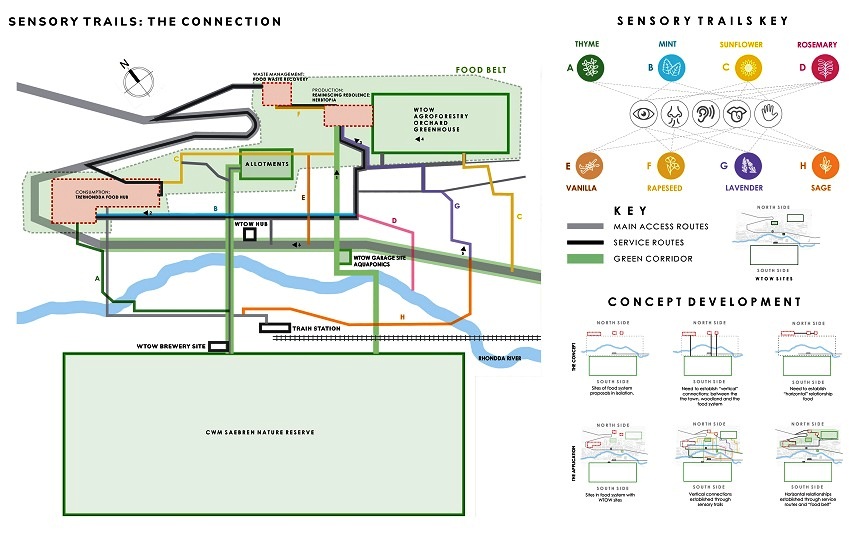
AgGrow Food Territories Conceptual Master Plan
Briefly describe the significance of your project.
Rhondda Food Hub: Treherbert, a former mining town in the Rhondda Valley, faced a loss of identity and economic struggles due to coal mine closures and industrial decline. It has since strived to establish a more resilient industry. Its natural beauty, close-knit community and rich Welsh heritage offer many opportunities for a sustainable identity revival. My project leverages these assets and the community’s vision as a foundation for a more sustainable future for the town.
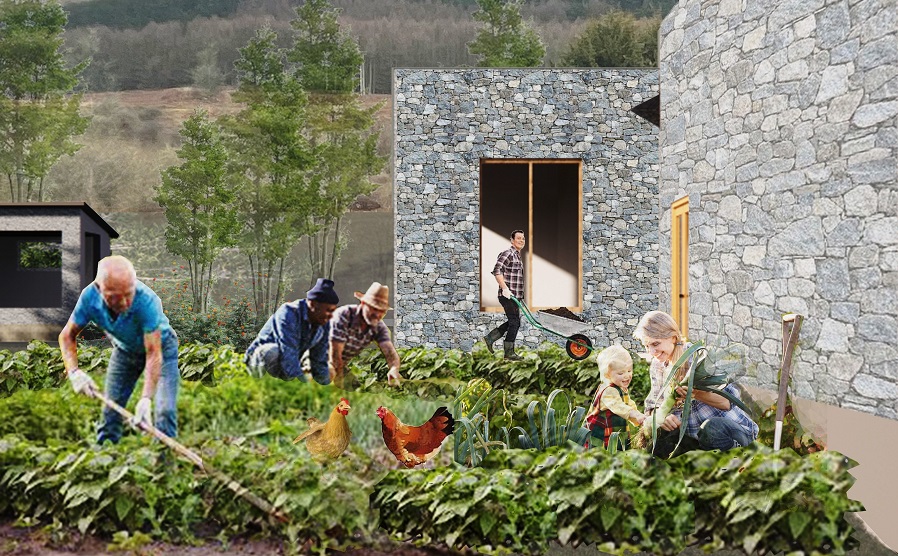
Allotments – A Good Yield
The Rhondda Food Hub works to govern the ‘consumption sector’ of the agro Food Territories system of the town, a system we as a group proposed. It is where food aggregation and redistribution takes place. Promoting food consumption in the region and set apart for embracing conviviality and seasonality principles inspired by Welsh cuisine, the project aims to improve the community’s connection with food, raise awareness about sustainable food production and preparation, and revive Welsh gastronomy through training and demonstration.
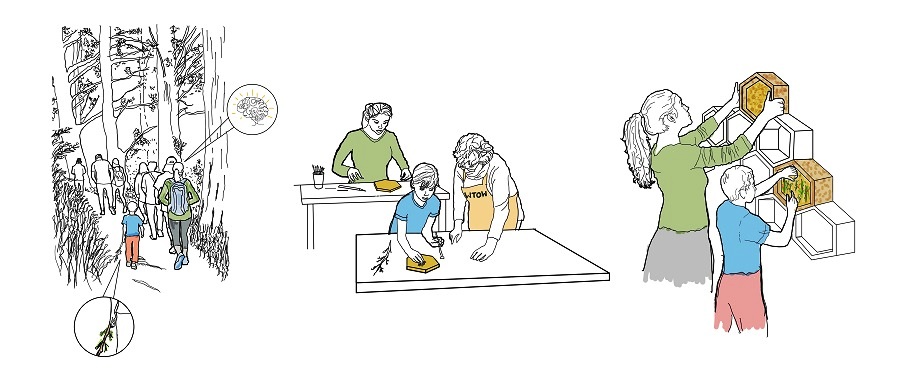
Process of Artistically Expressing Experience
The Rhondda Food Hub will make high-quality Welsh produce more accessible, both physically and through the Open Food Network online portal. It will prioritize fruits and vegetables for sustainability and cater to a diverse audience, promoting equality. This initiative builds on the existing Cwm Food Hub, working towards a thriving food culture and holistic food experience of the town. Additionally, by involving the community in the design process, it gives them ownership of the solution and its outcomes – a project generated for and from the town, fostering a shared purpose.
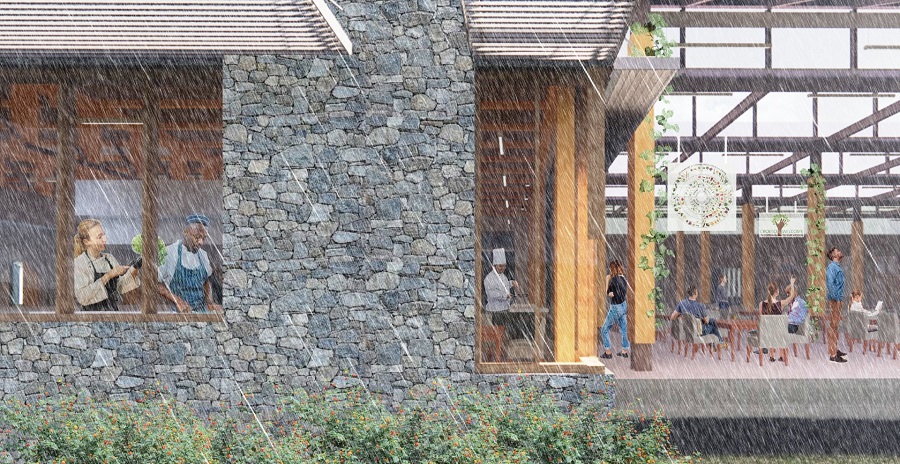
Cawl on a Rainy Day
Which National or International architect has inspired / influenced you? Please specify as to why?
Before I started studying architecture, I was inspired by a TED talk by Renzo Piano. He emphasized that ‘architecture is a built expression of global changes over time meeting not only people’s needs, but also their desires and dreams’. Buildings can reflect the identity of those living in them, and building materials encompass not only form and structure, but also natural elements like light, water and sound. This talk expanded my horizons and ignited my passion for the fascinating world of architecture.

Convivial Square’s Active Edge
As an Intern, what is the most important lesson(s) you have learnt from senior architects, while being a part of a project?
While I have not been directly involved in design projects during internships, my experience with senior architects in school live projects and a summer internship has shown me the importance of translating clients’ needs and desires into design. Experienced architects often excel at this, because they can anticipate client preferences and requirements better than the clients themselves, and this often extends to the wider society and context.
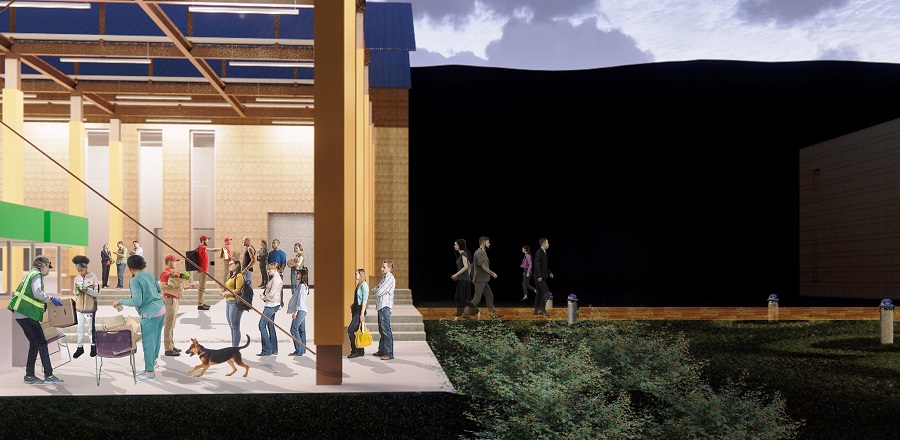
Rise of Foodbank at Sunset
Will the younger generation of architects make innovative changes to mitigate the catastrophic effects of Climate Crisis? Elucidate your perspectives.
There is potential for change, because I have met passionate, proactive young architects. At the WSA, students and tutors debated sustainability assessment metrics in architecture education, reflecting the younger generation’s concern for how sustainability is taught. This drive is seen in many young climate activists.
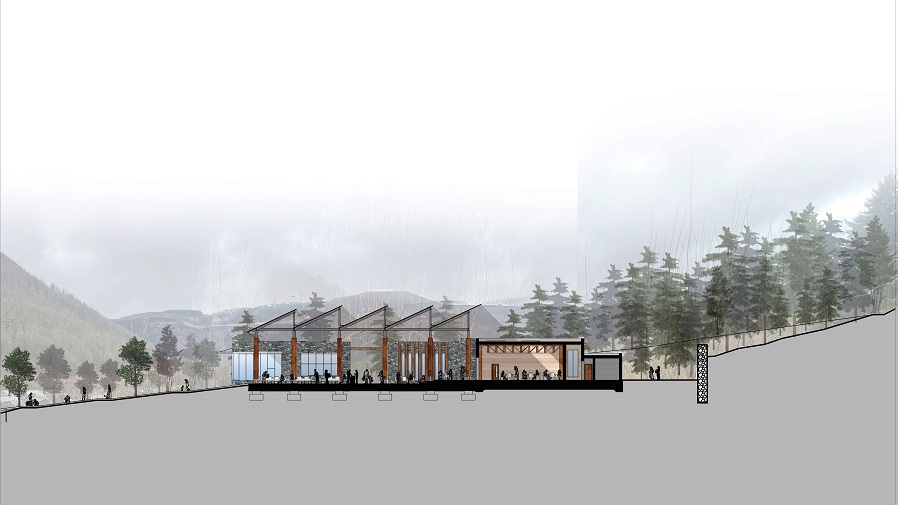
Sectional View
Which significant aspects of the global platform ‘zerobeyond – the new frontier!’ did you liked the most, and why?
Very few platforms globally provide an interview-style approach to getting to know and understanding students’ architectural views in one place, but ‘zerobeyond – the new frontier’ fills this gap. It is crucial to hear the perspectives of the next generation of architects, because their ideas will shape the future of architecture.

Rhondda Food Hub Warehouses
Local charm of cities has diminished due to Modern Architecture as every city looks alike and similar. How should architects / urban planners / landscape architects modernize cities, while maintaining the local charm intact?
Vernacular architecture often gets overlooked and lost in modern cities. It could be due to the enduring influence of the early 19th Century international style, which shaped many cities worldwide. Some of its characteristics persist. Additionally, countries like those in Africa, once colonized often emulate the architectural ideals of their former colonial rulers, particularly the government buildings. They have not really had the opportunity to explore and discover what their modern regional vernacular looks like, which takes time, research, resources etc., but it holds great potential.
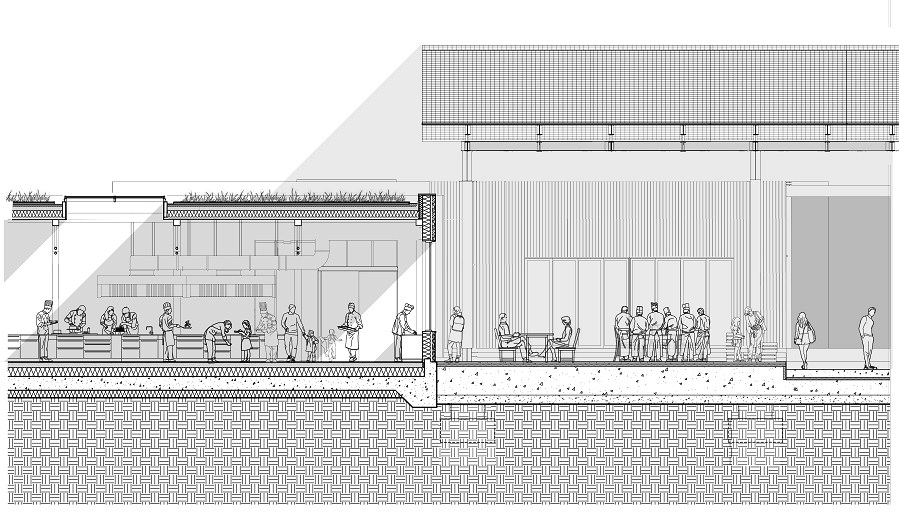
Construction Section – A Convivial Setting
Moving forward, architects can draw inspiration from the early 20th Century innovators like Antoni Gaudi and Victor Horta. They did not replicate the past, but created modern architecture that blended traditional influences with contemporary needs and technological advancements. The future should involve synergies between traditional and vernacular styles that celebrate local charm and sustainable design practices. The goal is not about individual autonomy for buildings, but rather coordination within a vernacular framework that allows each structure to maintain uniqueness and be appreciated, while preserving its distinct character. This approach is a synthesis towards critical regionalism, thereby embodying a contextually sensitive design ethos that embraces modern advancements.
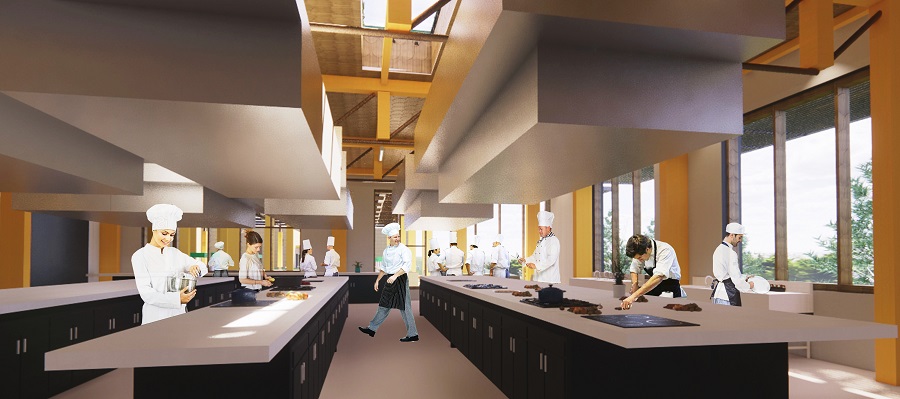
Culinary School – Guild of Chefs
Looking at the past in the current present, what are the futuristic architectural changes you would like to see in your home city / town? Elucidate the reasons for your vision.
I would like to see architecture that prioritizes people and communities, enhancing their experiences, while considering the landscape and unique setting. It should not be merely a pursuit of aesthetics, which does not consider the hierarchy and vitality of “form follows function”. This should follow critical regionalism principles, where architecture has a harmonious relationship with the landscape.
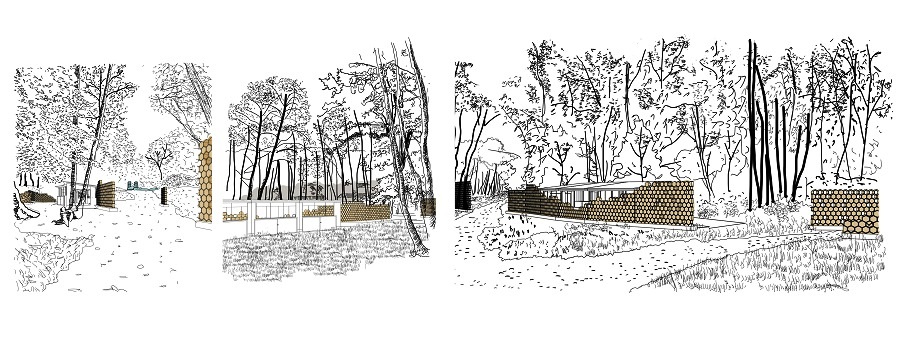
Serial Views – Wall in Woodland
Unfortunately, in many parts of my home city Lusaka, these important aspects are diminishing. However, as a developing nation, we have the potential to work towards a more sustainable future, with more efficient systems in the urbanscape, but we have not yet fully realized this potential.
Honours and awards related to architecture, if any.
Upon completing my under graduation studies, I achieved a Second Class Honours division One. During the 2023 WSA Exhibition, my unit received the ‘Sara Featherstone Award’ for “Best Exhibit”, for which I was the unit’s curation co-lead.
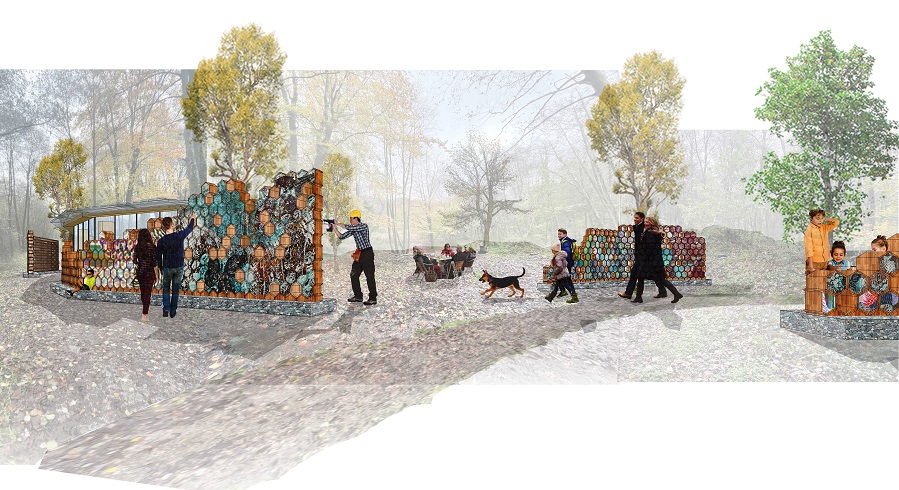
Primer – Woodland Wall of Experiences
Image Courtesy: Natasha Sekelaga Angomwile